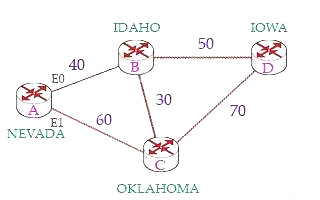Which two actions influence the EIGRP route selection process? (Choose two.)
A. The advertised distance is calculated by a downstream neighbor to inform the local router of the bandwidth on the link.
B. The router calculates the feasible distance of all paths to the destination route.
C. The router must use the advertised distance as the metric for any given route.
D. The router calculates the best backup path to the destination route and assigns it as the feasible successor.
E. The router calculates the reported distance by multiplying the delay on the exiting interface by 256.
A. The advertised distance is calculated by a downstream neighbor to inform the local router of the bandwidth on the link.
B. The router calculates the feasible distance of all paths to the destination route.
C. The router must use the advertised distance as the metric for any given route.
D. The router calculates the best backup path to the destination route and assigns it as the feasible successor.
E. The router calculates the reported distance by multiplying the delay on the exiting interface by 256.

